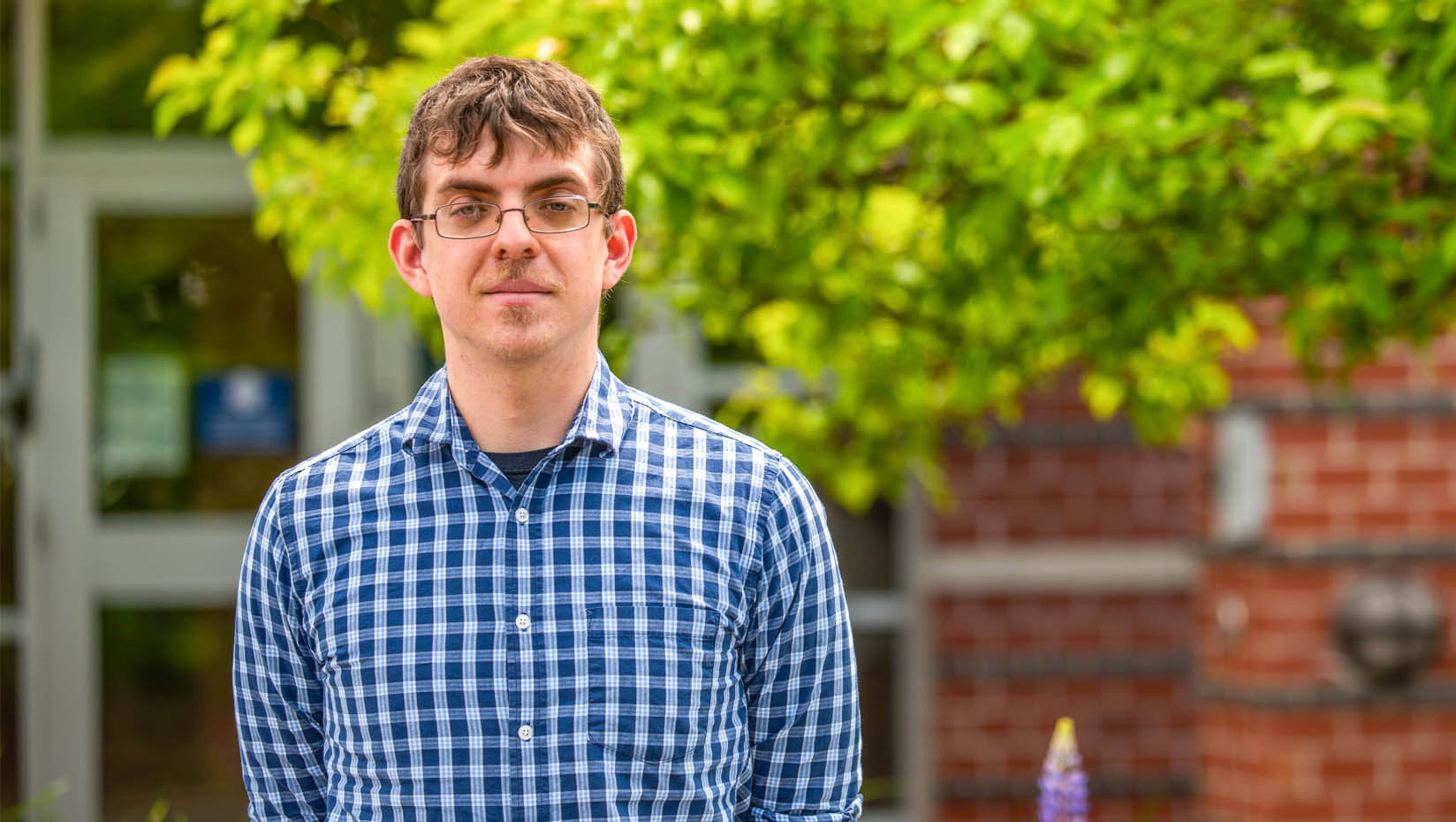
Andrew Schanck: Alumnus continues his UMaine work in cutting-edge bridge technology
Andrew Schanck from Pittsfield, Maine received his bachelor’s and master’s degrees, and his Ph.D in civil engineering from the University of Maine. He says he chose UMaine because of its renowned engineering program and stayed to pursue research as a graduate student in bridge engineering and advanced numerical modeling.
He started working at UMaine’s world-class Advanced Structures and Composites Center as an undergraduate in 2013. Today, he is working full time as a research engineer at the center.
“A global challenge that we face daily is the need for a qualified workforce to support the industries we’re literally creating. What makes Dr. Schanck invaluable is the fact that he is working to not only shape the future of infrastructure to be more efficient, economical and sustainable; but pioneering the next generation workforce needed to continue this work. It’s been a great pleasure to watch him grow as a student and I am excited for the lab, the State of Maine and the future of sustainable, durable infrastructure that he’s staying on to continue this important work,” Habib Dagher, founding Executive Director of the Advanced Structures and Composites Center.
The work that Schanck is involved in uses the UMaine developed G-Beam bridge technology which is environmentally conscious and low maintenance during a longer life cycle expectancy and requires faster and less disruptive installations. His team is currently working with the next generation of G-Beam technology, the double t girder. This new design allows for the replacement and design of bridges with a shorter clearance and simplifies the manufacturing process. The first installation of the double t girder G-Beam is planned for the fall of 2022 in Hampden, Maine.
“Andrew has been instrumental to the success of several projects, in particular the bridge field load testing for the MaineDOT and subsequent development of computationally efficient, advanced nonlinear analysis methods for assessing bridge capacity … . Andrew has also been critical to the success of the ASCC-developed FRP composite GBeam bridge girder, leading successful field load tests of newly installed bridges and conducting experimental and computational research to further advance the design and efficiency of this system,” says Bill Davids, professor of civil and environmental engineering.
The Advanced Structures and Composites Center and its green energy and materials mission spans numerous disciplines, industries and for the Schancks; it’s a family affair. Schancks brother, Aaron Schanck is a 2022 graduate of the University of Maine. Aaron earned his bachelor’s degree in computer science and has been instrumental on the ASCC communications team during his four years as a student. Aaron will continue at the center as a communications specialist supporting the Transportation Infrastructure Durability Center.
Can you think of a specific experience at UMaine that has led you to where you are today?
As an undergraduate student, I worked as a research assistant at the ASCC, involved in a variety of interesting projects. One summer, I was given the opportunity to assist in a series of bridge live-load tests out in the field. I was hooked. I enjoyed it so much that I volunteered to help the next summer as well. The summer after that, I was a first-year grad student and ran the bridge tests myself based on the experience I had gained.
Why did you decide to take your current job at the ASCC?
I decided to take this position because it allowed me to continue working with cutting-edge bridge technology, leading the charge and having a positive effect on the industry.
Describe the work you are doing at the Advanced Structures and Composites Center.
Although a small portion of my work is on proprietary projects, the majority of my work deals with development, numerical modeling and testing bridge structures using the UMaine-developed G-beam composite bridge girder system.
How did UMaine prepare you for the work you are doing now?
Without the training and experience I recieved at UMaine, I could not do my job. I know of no other program that provides both bridge engineering and composite mechanics courses, and certainly none where that knowledge can be put to work in a full-scale structural testing lab or in the field.
What is your long-term vision for the work you are doing?
My long-term vision is to continue working on development of composite bridge technology, as well as numerical modeling, both in general and specifically in bridge rehabilitation and capacity rating. In short, I want to be the guy people go to for anything bridge or finite element-method related.
Contact: Hope Carroll, hope.carroll@maine.edu
